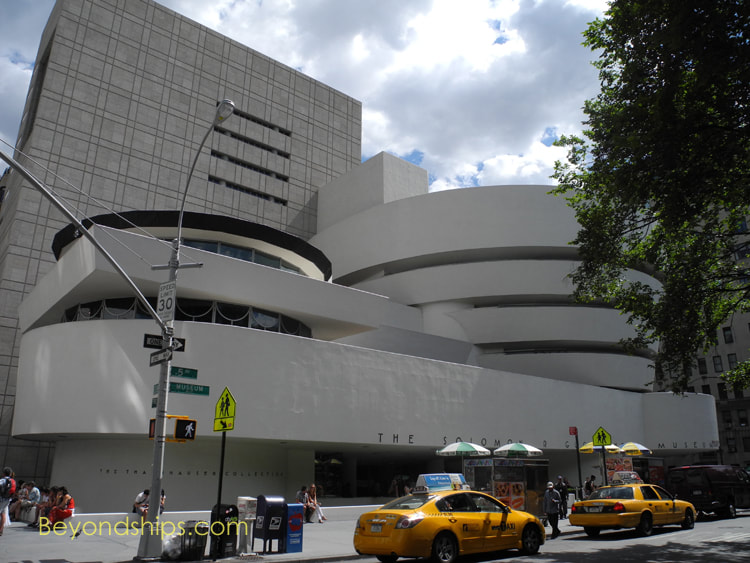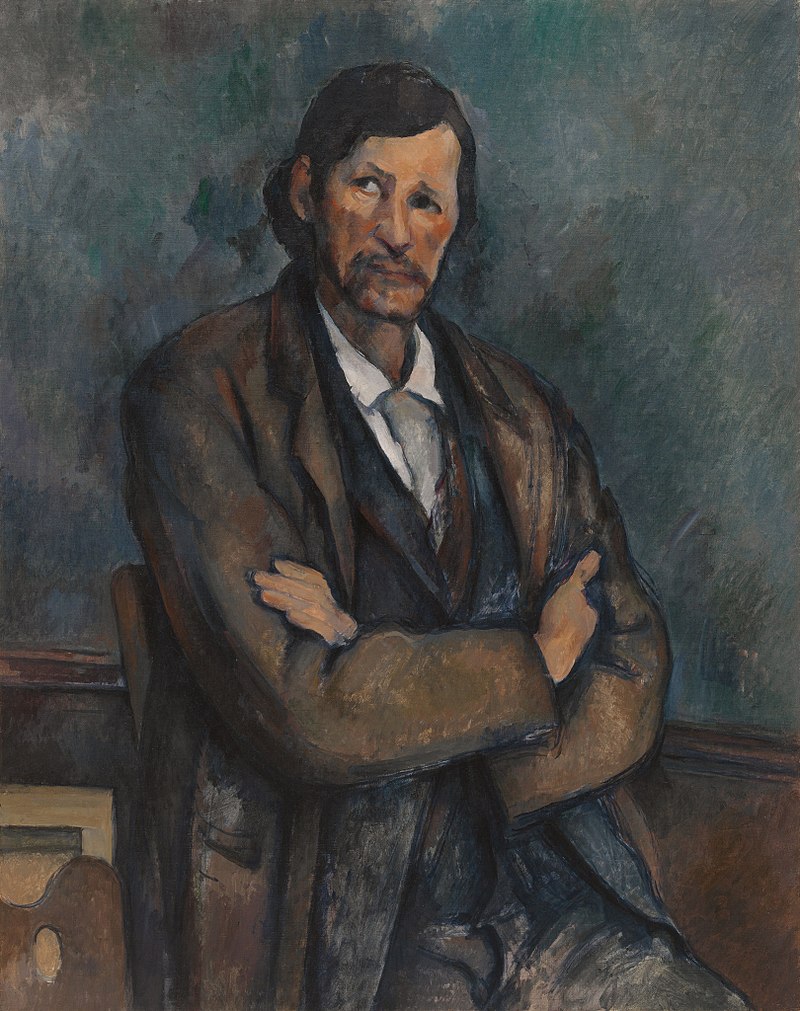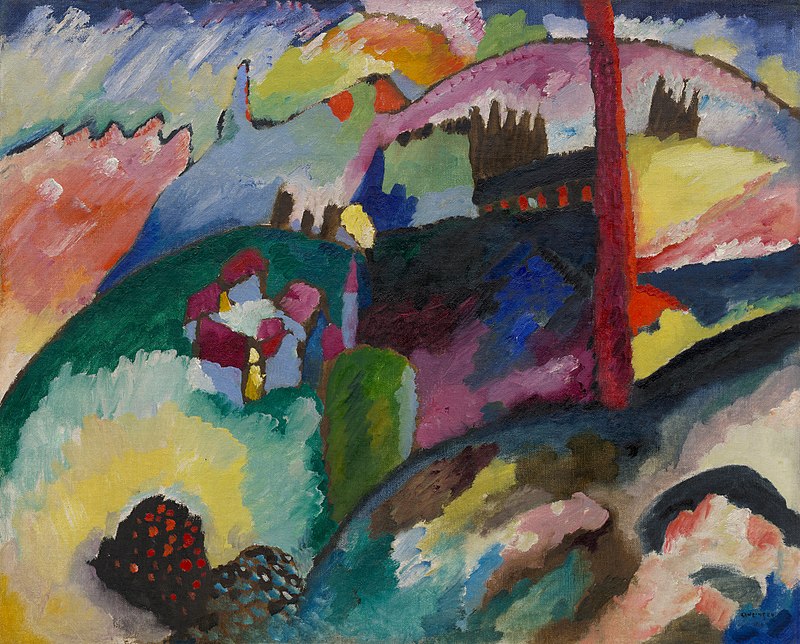|
Although the Solomon R. Guggenheim Museum is one of several museums along New York City's Museum Mile, it is unique. The museum is housed in an unconventional landmark building. Furthermore, its collection illustrates the development of unconventional art from its beginnings to the present day.
The founder of the museum was Solomon R. Guggenheim. A member of a wealthy mining family, Guggenheim was an avid collector of traditional European art. However, in 1926, Hilla Von Rebay introduced him to modern art and he shifted to collecting abstract modern works. In 1937, Guggenheim founded the Solomon R. Guggenheim Foundation to foster appreciation of modern art. In 1939, the Foundation opened the Museum of Non-objective Art, based primarily on Guggenheim's modern art collection. It was located on East 54th Street in Manhattan. By the 1940s, the new museum was outgrowing its home. Therefore, the Foundation approached architect Frank Lloyd Wright about creating a new building. The new building was envisioned as being much different than traditional museums in keeping with the museum's avant garde attitude. However, the project proceeded slowly and it was not until 1959 that the new building designed by Wright opened to the public. Meanwhile, in 1952, the Foundation changed the name of the museum to the Solomon R. Guggenheim Museum in honor of its founder who had died in 1949. The museum continued to expand after the new building opened. Its collection grew through donations and acquisitions. A 10-story rectangular tower designed by the architectural firm Gwathaney Siegel & Associates was erected behind the original Wright building in 1992. During this period, the museum also began to open museums in locations outside New York such as the Guggenheim Bilboa. In 2008, a major restoration project for the original building was completed. The Guggenheim's permanent collection includes works from the 19th century to the present day. It began with Mr. Guggenheim's collection of non-objective abstract works from the first half of the 20th century. In 1963, the museum received a portion of the Justin K. Thannhauser collection of Impressionist, Post-Impressionist and early modern art. These works covered the period leading to the works in Mr. Guggenheim's collection. During the 1970s, the museum inherited Peggy Guggenheim's collection of abstract and Surrealist works. This collection complemented and filled in gaps in her uncle's original collection. In the 1990s, the museum's collection grew with works from the collection of Count Giuseppe Paza di Bimuo including Minimalist, Post Minimalist, Environmental and Conceptual pieces. Strengthening its holdings of port-war art, this extended the museum's collection later than the original collection. Other acquisitions and donations have further expanded and developed the collection making it one of the world's leading collections of modern art. A unique asset of the Guggenheim is its building. While most buildings in Manhattan are rectangular,Wright designed the museum in a cylindrical shape with the top wider than the lower levels. Inside, the building is mostly open space. Looking up from ground level, you can see the skylight many levels above. Cantilevered out from the walls is a ramp that winds down from the top to the ground level. The art is displayed along the ramp and in enclaves located at various points along the ramp. The building is not ideal for displaying art. The walls on which the art is hung are not vertical but rather slope inwards. Thus, measures have to be taken to compensate when hanging pictures. The ceilings are also rather low for a museum, making it difficult to show large paintings and sculptures. Furthermore, inasmuch as the ramp spirals continuously downwards, viewers often have to stand on a slope when viewing works hung along the ramp. Such problems caused a number of artists to object to having their art displayed there when the building first opened. Nonetheless, the building was quickly recognized as an architectural landmark. Furthermore, its intriguing design attracts people to come and view the art more so than a conventional design. It also provides an interesting experience for visitors once inside. Thus, despite the criticisms, it all works pretty well. For information about visiting, see the Solomon R. Guggenheim Museum's website. |
Above: The Solomon R. Guggenheim Museum on Fifth Avenue.
Examples for the Guggenheim's collection: Paul Cézanne, Homme aux bras croisés (Man With Crossed Arms) (above) and Wassily Kandinsky, Landscape with Factory Chimney. (Both public domain)
|
Places to see art - - New York City - - Solomon R. Guggenheim Museum


